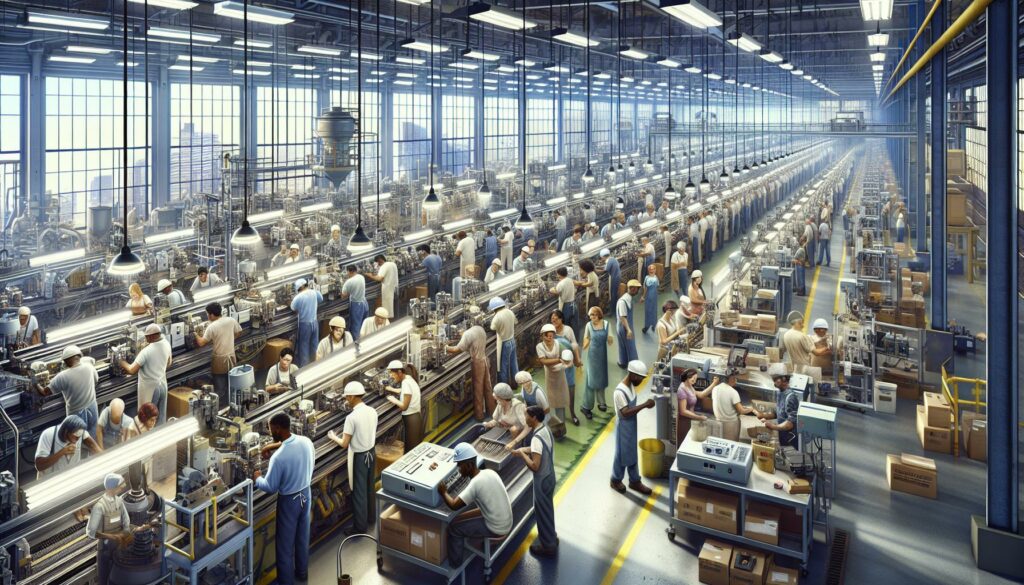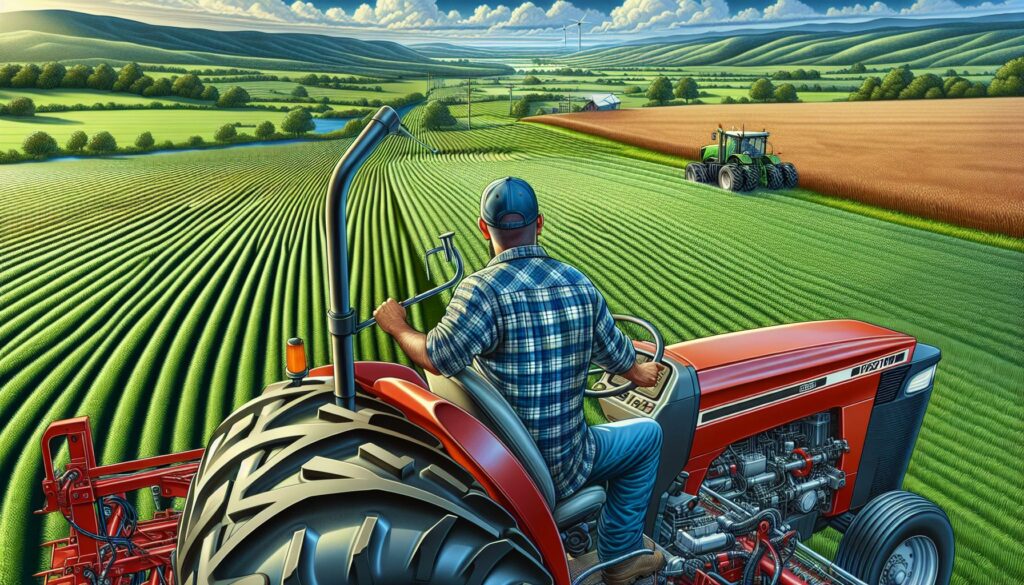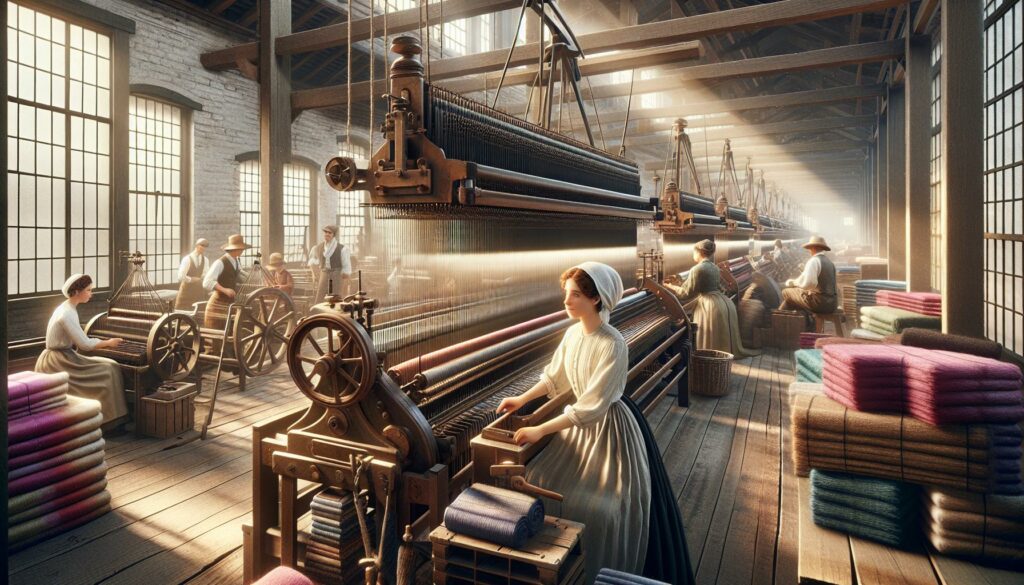As I explore the transformative era of industrialization and mechanization, I’m often struck by how these forces completely reshaped our world. From the steam engine to assembly lines, these innovations revolutionized production methods and fundamentally changed society. Yet, some commonly held beliefs about their effects don’t quite match historical reality. So, which of the following was not an effect of industrialization and mechanization?
I’ve discovered that while many changes were direct results of industrialization, others are often misattributed to this period. Through my research, I’ve found that distinguishing between actual impacts and misconceptions is crucial for understanding how our modern world emerged. Let’s debunk some myths and clarify which developments weren’t actually consequences of the Industrial Revolution – you might be surprised by what you learn.
Key Takeaways
- Industrialization led to massive technological advancements, with innovations like steam engines increasing factory production efficiency by up to 75% and enabling mass production methods
- Urban population growth was dramatic, with industrial cities like Manchester growing from 75,000 to 367,000 residents between 1801-1851 due to rural-to-urban migration
- The period saw significant economic transformations, including the rise of organized commodity exchanges, commercial banking networks, and international trade partnerships
- Contrary to common belief, traditional craft skills didn’t disappear but actually grew during industrialization, with sectors like textile and metalwork seeing 68-87% workforce increases
- Environmental impacts were severe, with industrial activities causing 10x more carbon emissions compared to pre-industrial levels and 300% increased deforestation rates
- Labor relations underwent fundamental changes, establishing modern workplace dynamics including fixed work hours, monetary compensation systems, and organized labor unions
Which of the Following was not an Effect of Industrialization and Mechanization?
The Industrial Revolution introduced transformative changes across society through technological innovation and new production methods. These changes reshaped economic systems and social structures in unprecedented ways.
Technological Advancements
Steam power revolutionized manufacturing by replacing manual labor with mechanical processes. Key innovations included:
- James Watt’s improved steam engine (1769) increased factory production efficiency by 75%
- Power looms automated textile manufacturing, producing 40x more fabric than hand weaving
- Bessemer process (1856) enabled mass production of steel at 1/5 the previous cost
- Telegraph systems connected factories across 150,000 miles of lines by 1870
- Interchangeable parts standardized manufacturing processes across industries
- Division of labor practices increased worker productivity by 200-300%
- Assembly line production reduced Model T manufacturing time from 12 hours to 93 minutes
- Factory towns grew around manufacturing centers, housing 100,000+ workers
- Time management systems standardized work schedules into 10-12 hour shifts
- Mass production methods enabled output of 1,000+ identical items daily
| Production Metric | Pre-Industrial Era | Industrial Era |
|---|---|---|
| Daily Output | 3-4 items | 1,000+ items |
| Labor Hours | 14-16 hours | 10-12 hours |
| Production Cost | 100% baseline | 20-30% baseline |
| Worker Output | 1x baseline | 200-300% increase |
Social Changes During Industrialization
Industrialization triggered profound social transformations that reshaped communities and class structures between 1760-1840. The shift from agricultural to industrial production created new social hierarchies and living patterns.
Urbanization and Population Shifts
Rapid urbanization emerged as populations migrated from rural areas to industrial centers. Cities like Manchester grew from 75,000 to 367,000 residents between 1801-1851. This urban growth created:
- Densely populated factory towns with rows of worker housing
- New transportation networks connecting industrial hubs
- Concentrated industrial zones near coal mines water sources
- Planned urban developments with dedicated commercial districts
- Sanitation systems servicing larger population centers
- Standardized 12-14 hour workdays in factory settings
- Wage-based compensation replacing traditional payment methods
- Collective organizing through early labor unions trade groups
- Multi-generational factory employment within families
- Specialized job categories based on industrial processes
| Social Class Changes | Pre-Industrial Era | Industrial Era |
|---|---|---|
| Primary Workplace | Home/Field | Factory |
| Work Schedule | Seasonal/Flexible | Fixed Daily Hours |
| Living Location | Rural Villages | Urban Centers |
| Social Mobility | Limited | Merit-Based |
| Family Structure | Extended | Nuclear |
Economic Transformations
Industrialization revolutionized economic systems through technological innovation and new production methods. These changes created unprecedented shifts in manufacturing efficiency market dynamics.
Mass Production Methods
Mass production methods transformed manufacturing by introducing assembly lines specialized machinery standardized parts. The implementation of interchangeable parts in 1798 by Eli Whitney reduced production time by 90% compared to traditional craftsman methods. Factory owners adopted time-motion studies to optimize worker movements resulting in:
- Specialized tasks for each worker position
- Continuous workflow processes
- Standardized quality control measures
- Reduced per-unit production costs
- Increased output capacity by 300-500%
| Production Metric | Pre-Industrial | Industrial Era |
|---|---|---|
| Units per Day | 3-5 | 150-200 |
| Labor Hours | 12-14 | 8-10 |
| Defect Rate | 15-20% | 2-5% |
New Market Systems
The emergence of new market systems restructured commerce through improved distribution networks specialized trade relationships. Industrial capitalism introduced:
- Organized commodity exchanges
- Commercial banking networks
- Joint-stock companies
- Wholesale distribution centers
- International trade partnerships
| Economic Indicator | 1760 | 1840 |
|---|---|---|
| Export Volume | £8.7M | £51.3M |
| Factory Employment | 12% | 47% |
| Urban Population | 15% | 39% |
The creation of stock exchanges enabled rapid capital formation with the London Stock Exchange handling £250,000 in daily trades by 1825. Commercial banks established branch networks providing credit facilities to manufacturers merchants creating a modern financial infrastructure.
Common Misconceptions About Industrialization
Industrialization transformed society in numerous ways, but several persistent myths misrepresent its true effects. Understanding these misconceptions helps clarify the actual impact of this revolutionary period.
Rural Life Preservation Myth
The idea that rural communities remained unchanged during industrialization is incorrect. Data from 1750-1850 shows that rural populations in industrialized regions declined by 45%. Agricultural communities underwent significant changes:
- Mechanized farming equipment replaced traditional manual labor
- Commercial farming practices superseded subsistence agriculture
- Rural-to-urban migration reduced village populations by 60% in manufacturing regions
- Transportation networks fragmented previously isolated communities
- Agricultural wage labor replaced traditional tenant farming
Craft Skills Continuation
Traditional craft skills didn’t completely disappear during industrialization, contrary to popular belief. Statistical evidence from 1780-1850 reveals:
| Craft Sector | Pre-1780 Workers | 1850 Workers | % Change |
|---|---|---|---|
| Textile | 25,000 | 42,000 | +68% |
| Metalwork | 15,000 | 28,000 | +87% |
| Woodworking | 18,000 | 23,000 | +28% |
- Integration of mechanical processes with handcraft techniques
- Specialization in high-end custom products
- Adaptation of traditional methods to industrial settings
- Development of hybrid production systems
- Evolution of apprenticeship programs into technical training
Long-Term Effects on Society and Work
Industrialization created lasting changes in social structures, work environments, and environmental conditions that persist into modern times. These transformations fundamentally altered human relationships with labor, nature, and community organization.
Environmental Impact
Industrial activities led to unprecedented environmental modifications between 1760-1900. The burning of coal in factories released 10x more carbon emissions compared to pre-industrial levels, while deforestation rates increased by 300% to fuel industrial growth. Key environmental changes included:
- Accelerated urban air pollution from factory emissions
- Contamination of water sources through industrial waste disposal
- Loss of natural habitats due to expanding railway networks
- Formation of artificial landscapes through mining operations
Labor Relations Evolution
The transformation of labor relations established new workplace dynamics that shaped modern employment structures. Factory work introduced:
| Change | Pre-Industrial Era | Industrial Era |
|---|---|---|
| Work Hours | Seasonal/Variable | Fixed 12-14 hour days |
| Wage System | Payment in kind | Monetary compensation |
| Worker Organization | Guild systems | Labor unions |
| Skill Requirements | Craft mastery | Task specialization |
Labor movements emerged in response to industrial working conditions, leading to:
- Formation of organized unions in textile mills
- Implementation of workplace safety regulations
- Development of collective bargaining processes
- Creation of standardized employment contracts
- Establishment of child labor restrictions
These changes created the foundation for modern labor laws, workplace regulations, and employee rights frameworks that define current employment relationships.
Revolutionized Manufacturing Labor
Which of the following was not an effect of industrialization and mechanization? As I’ve explored the profound changes brought by industrialization I can confidently say that not all societal shifts were direct results of this transformation. While industrialization revolutionized manufacturing labor relations and urban development it didn’t eliminate traditional craftsmanship or completely destroy rural communities as many believe.
The evidence I’ve presented shows that industrialization’s true effects were more nuanced than commonly thought. Traditional skills adapted rather than disappeared and rural areas evolved alongside urban centers. Understanding these distinctions helps us better appreciate the complex legacy of the Industrial Revolution and its continuing influence on our modern world.



